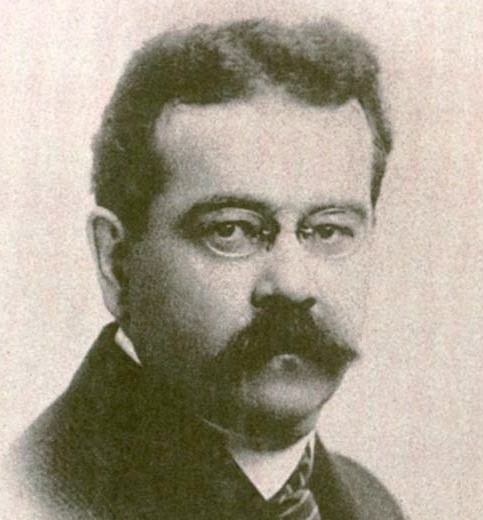Lisa Fagin Davis was starting her medieval-studies Ph.D. at Yale in 1989 when she got a part-time job at the university’s Beinecke Rare Book & Manuscript Library. Her boss was the curator of early books and manuscripts, and he stuck her with an unenviable duty: answering letters from the cranks, conspiracists, and truthers who hounded the library with questions about its most popular holding.
In the library catalog, the book—a parchment codex the size of a hardcover novel—had a simple, colorless title: “Cipher Manuscript.” But newspapers tended to call it the “Voynich Manuscript,” after the rare-books dealer Wilfrid Voynich, who acquired it from a Jesuit collection in Italy around 1912. An heir sold the manuscript to another dealer, who donated it to Yale in 1969.
Davis grew up in Oklahoma City, transfixed by the fantasy worlds of J. R. R. Tolkien and Dungeons & Dragons. When the Beinecke curator first showed her the Voynich Manuscript, she thought, This is the coolest thing I’ve ever seen.
Its 234 pages contained some 38,000 words, but not one of them was readable. The book’s unnamed author had written it, likely with a quill pen, in symbols never before seen. Did they represent a natural language, such as Latin? A constructed language, like Esperanto? A secret code? Gibberish? Scholars had no real idea. To Davis, however, the manuscript felt alive with meaning.
Davis, then 23 years old, with a rosy sense of the world’s knowability, wanted to figure out what the Voynich Manuscript was, what it meant, where it came from. But people in her field saw the Voynich as a waste of time, a house-of-curiosities gewgaw unworthy of the serious scholar, especially when so many legible manuscripts begged for study.
…
This shape-shifting—this inability to see it from any one angle—persuaded the Malta computer scientists, led by Colin Layfield, to assemble a multidisciplinary team. So little was known about the underlying language—if it was a language—that even artificial intelligence, in its current state, lacked the models to decode it. Good AI requires “massive amounts of data to learn from,” Layfield told me. “We simply don’t have that luxury with the text in the Voynich.” In 2021, Layfield recruited Davis, Bowern, and other specialists, and they began meeting online to develop ideas for collaboration. In late 2022, the Voynich Research Group, as it became known, held its first conference, with 16 peer-reviewed papers, touching on history, literature, paleography, linguistics, cryptology, and—because of some of the drawings—medieval gynecology. Davis was invited to give the closing keynote.
Scholars inside and outside the group are now pressing in a variety of directions. Some are using mathematical tools to hunt for “cribs”: words whose meanings can be inferred because they consistently appear, like labels, beside certain illustrated objects.
Others are reevaluating the alphabets that earlier scholars created to convert the Voynichese letterforms into machine-readable ASCII text—the raw data for computational studies of the language. AI might be unable to decrypt the Voynich, but it could contribute in other ways, once enough of the world’s hundreds of thousands of medieval manuscripts are digitally imaged and accessible. Models trained on those images may eventually develop the power to spot visual similarities to the Voynich—the curvature of a particular pen stroke, the shades of certain pigments—that have eluded the human eye. Those similarities could help scholars identify writing communities with possible ties to the Voynich.
Still conspicuously missing from the research are professional art historians. Scholars of medieval art could bring a whole new field to bear on the Voynich’s illustrated world, but like other medievalists, they have been reluctant to engage.



The Codex Seraphinianus, an artwork by Luigi Serafini created in the late 1970s, probably was inspired by the Cipher manuscript.
Maybe the Cipher manuscript was a kind of artwork itself which doesn’t have any actual meaning at all.